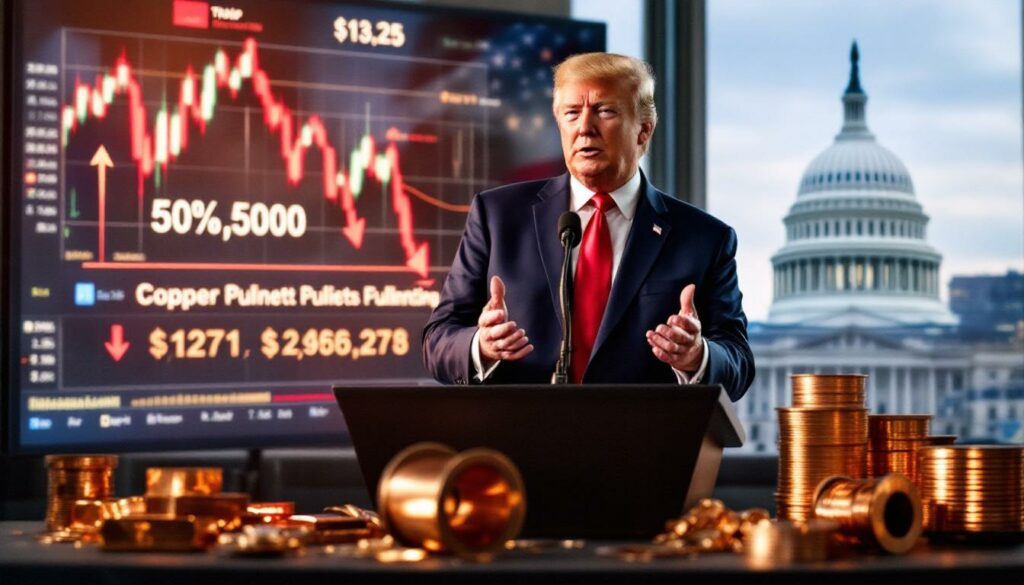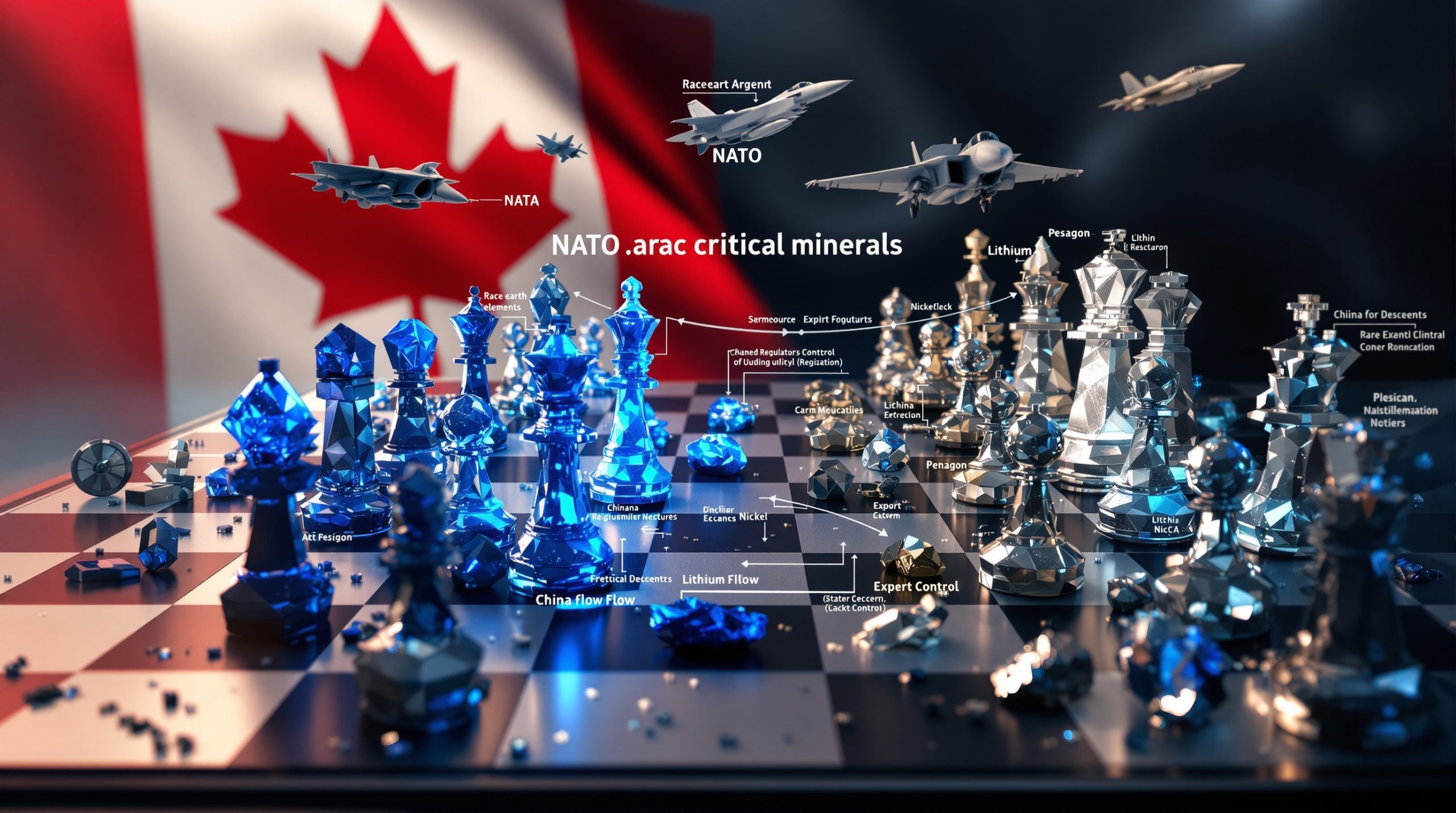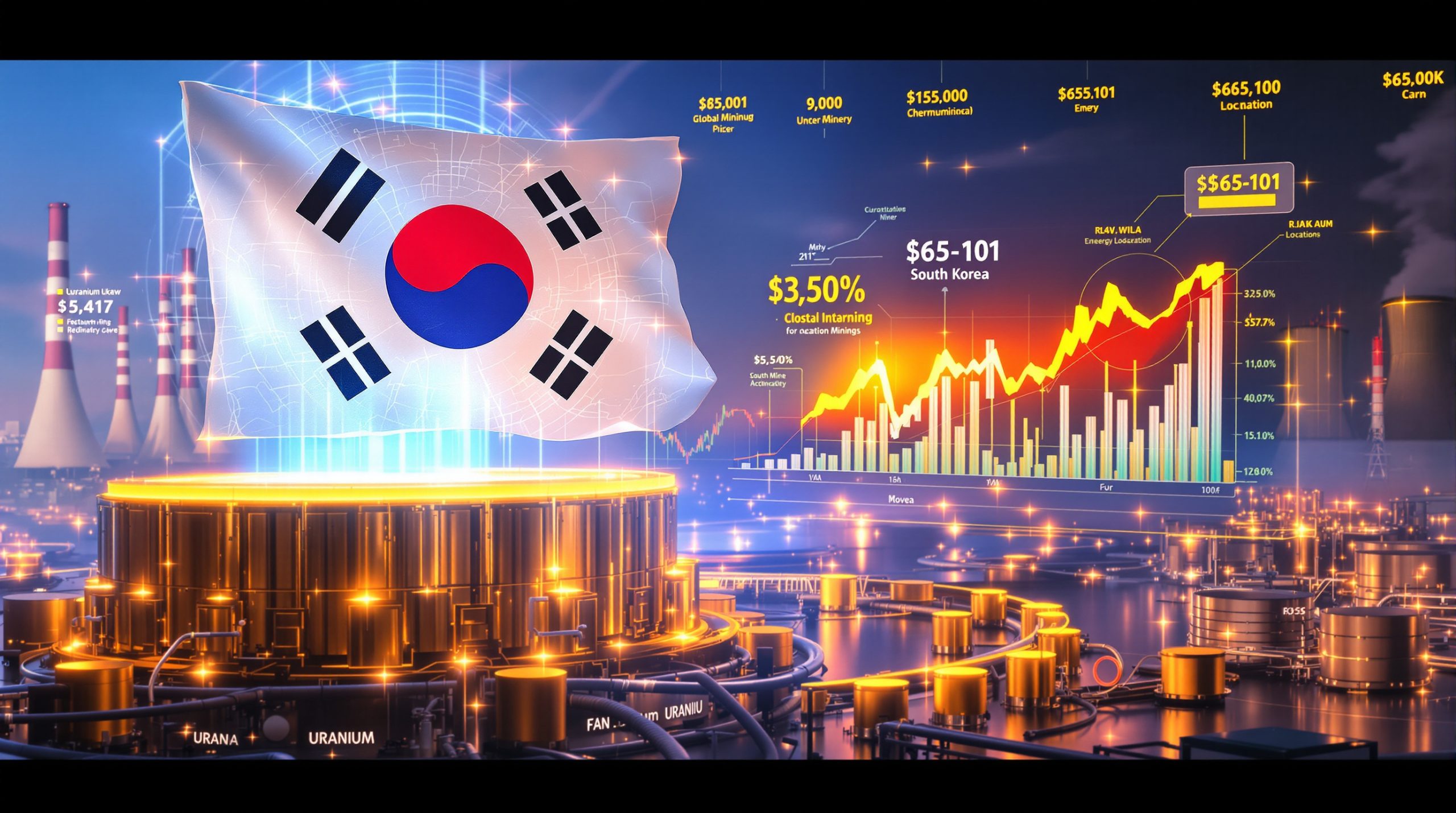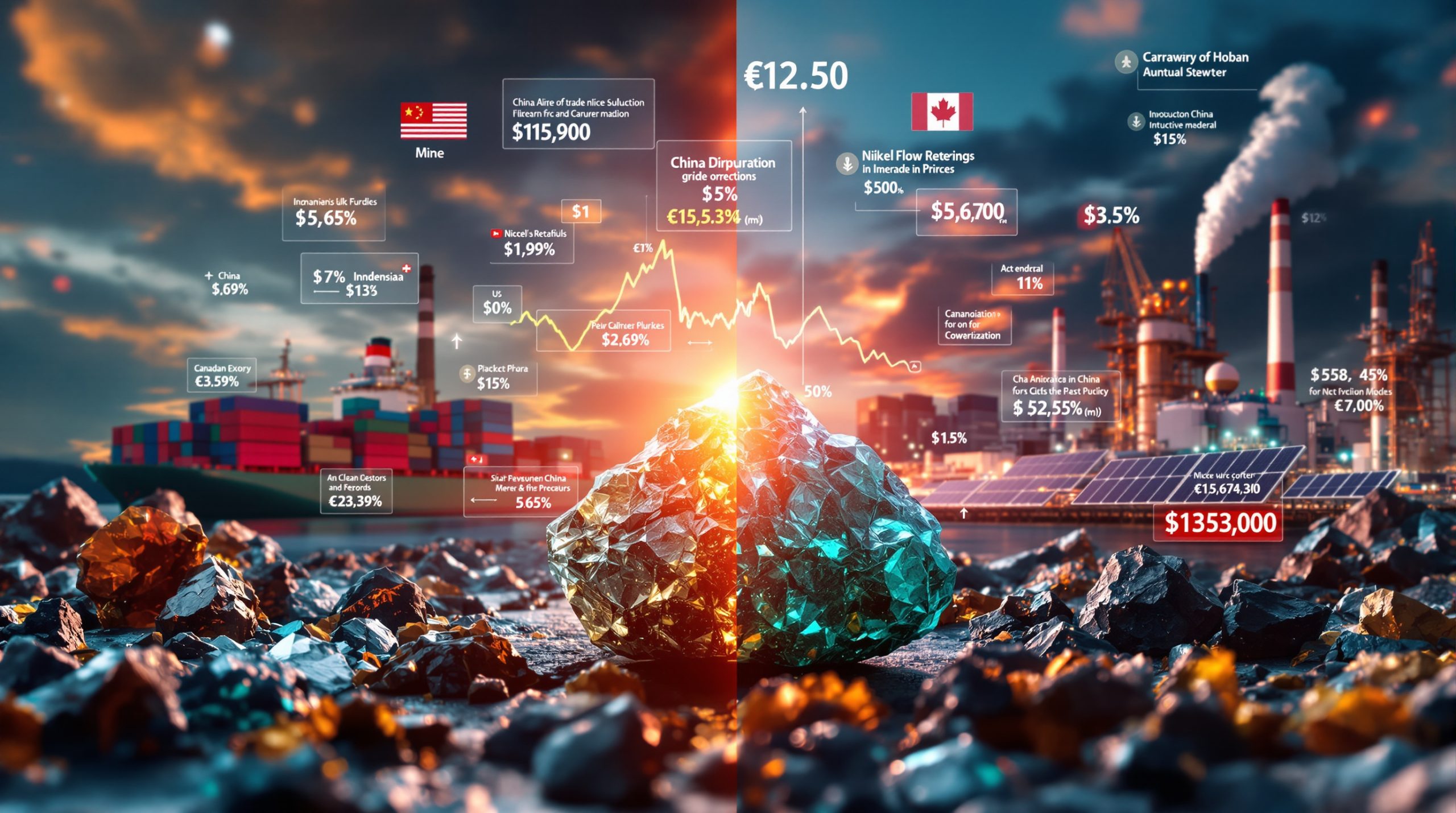How Did Trump's Copper Tariff Decision Impact Global Markets?
The copper market experienced unprecedented volatility following President Trump's unexpected decision to exempt raw copper imports from previously announced tariffs. This policy reversal sent shockwaves through global commodity markets, creating one of the most dramatic price movements in copper trading history.
The Initial Tariff Announcement
On July 10, 2025, the Trump administration announced a sweeping 50% tariff on copper imports scheduled to take effect on August 1, 2025. This protectionist measure initially lacked specificity about which copper products would be covered, creating significant uncertainty across supply chains.
In the three weeks following the announcement, market participants scrambled to position themselves before the implementation deadline. The ambiguity of the tariff's scope led to panic buying as manufacturers, traders, and end-users rushed to secure supplies before the potential price increase.
Copper futures responded dramatically, reaching an all-time high of $5.9585 per pound—a record that reflected both supply constraint fears and speculative positioning. Trading volumes surged to more than triple their typical levels as market participants placed bets on the tariff impact on copper.
"The market was essentially pricing in a worst-case scenario where virtually all copper imports would face the 50% tariff," notes Phil Streible, chief market strategist at Blue Line Futures, who has over two decades of copper trading experience.
The Unexpected Exemption Decision
In a stunning reversal that caught most market participants off guard, the administration unexpectedly exempted "the most widely imported form of raw copper" just days before the scheduled implementation. This decision contradicted the market's expectation of strict protectionist measures and triggered the largest single-day price drop in copper since at least 1988.
The exemption announcement created a perfect storm in the options market:
- Over 31,000 previously out-of-the-money put options suddenly became profitable
- The notional value of in-the-money put contracts surged to $3.54 billion
- This represented a dramatic increase from just $94.4 million in in-the-money puts the previous day
- Only 675 put options had been in-the-money before the announcement
The copper tariff adjustment demonstrated the administration's willingness to modify trade policies despite strong initial rhetoric. This flexibility surprised many analysts who had expected a more rigid implementation of the announced tariffs.
"All the tariffs that we've seen and many of the policies coming out of the administration have been very fluid in nature with extreme outcomes on both sides of the tail trade," observed Streible following the market's reaction.
Immediate Market Consequences
The exemption announcement sent copper prices plummeting in New York trading, with the benchmark futures contract experiencing its most significant single-day decline since reliable records began in 1988. This dramatic reversal caught many traders and industrial users flat-footed.
For manufacturers who had stockpiled copper in anticipation of higher prices, the sudden reversal created inventory management challenges and potential financial losses. Conversely, operations that had delayed purchasing decisions found themselves with an unexpected pricing advantage.
The price volatility also disrupted global supply chains, as traders and end-users struggled to adjust to the rapidly changing market conditions. International copper producers, particularly those who had adjusted production schedules in anticipation of shifting trade flows, faced difficult decisions about output levels and export destinations.
What Trading Strategies Paid Off During the Copper Tariff Uncertainty?
The extreme price volatility in copper markets created both spectacular winners and devastating losers among traders who had positioned themselves based on different policy expectations. The unusual market conditions demonstrated the high-risk, high-reward nature of trading during periods of policy uncertainty.
Options Market Reaction
The most successful traders during this period employed strategies that many market veterans considered highly speculative at the time. These "lottery ticket" put options—low-cost, out-of-the-money contracts that would only pay off in the event of a significant price decline—delivered extraordinary returns when the exemption was announced.
"It's pretty amazing—the lotto tickets worked," remarked Phil Streible of Blue Line Futures, referring to the previously improbable puts that suddenly became valuable. The unexpected policy shift validated a contrarian approach that few had been willing to take.
The options market data revealed the dramatic scale of this reversal:
| Options Status | Before Exemption | After Exemption | Change |
|---|---|---|---|
| In-the-money puts | 675 contracts | 31,000+ contracts | +4,500% |
| Notional value | $94.4 million | $3.54 billion | +3,650% |
These figures represent one of the most dramatic overnight transformations in commodity options history, underscoring the exceptional market impact of the copper tariff adjustment.
Strategic Positioning by Market Participants
Different market participants employed varying strategies during this period of uncertainty:
-
Contrarian Options Traders: Some traders purchased what market strategists described as "lottery ticket" put options, betting against consensus expectations that tariffs would be fully implemented. These low-probability, high-reward positions paid off dramatically when policy shifted.
-
Copper Producers: Many mining companies had hedged production at the elevated price levels, providing downside protection that proved valuable after the exemption announcement.
-
Industrial Consumers: Manufacturing companies with copper-intensive production processes implemented diverse hedging strategies, with those maintaining balanced positions faring better than those who made all-or-nothing bets on the tariff outcome.
-
Institutional Investors: Banks and hedge funds with long positions based on tariff implementation faced significant losses, with some major trading desks reportedly suffering nine-figure hits to their commodity portfolios.
Expert Perspective on Market Volatility
The copper market's response illustrated how quickly commodity prices can adjust to policy changes, particularly when those changes contradict market expectations. Traders who had maintained hedged positions or who had anticipated policy flexibility were rewarded, while those who had made unidirectional bets faced significant losses.
"The copper tariff situation demonstrates how policy uncertainty creates both risks and opportunities in commodity markets," explains Streible. "We've seen extreme outcomes on both sides of the tail trade, which reminds us of the importance of managing downside exposure even when a particular outcome seems highly probable."
Market analysts noted that the "fluid nature" of the administration's trade policies had created an environment where traditional fundamental analysis needed to be supplemented with political and policy expertise. This interdisciplinary approach to commodity trading represented a significant evolution in market strategy.
How Did Lobbying Influence the Copper Tariff Decision?
The three-week period between the tariff announcement and implementation deadline saw unprecedented lobbying efforts from stakeholders across the copper supply chain. This intense advocacy campaign highlighted the competing interests within the industry and ultimately shaped the administration's decision to exempt raw copper.
Key Stakeholder Involvement
Multiple industry groups mobilized rapidly after the tariff announcement:
-
US copper producers advocated for protective measures to support domestic production, arguing that the tariffs would revitalize American mining operations and reduce dependence on foreign suppliers.
-
Semi-finished product manufacturers sought exemptions to maintain access to raw materials, warning that increased input costs would make their products uncompetitive globally and potentially lead to job losses in downstream industries.
-
Scrap yards and recyclers pushed for policies that would benefit their segment of the industry, highlighting how tariffs could enhance the competitiveness of domestically recycled copper.
-
Foreign governments engaged in diplomatic efforts to secure favorable treatment, with several copper-exporting nations threatening retaliatory measures if the tariffs were implemented as announced.
The diversity of stakeholders involved created a complex advocacy landscape, with competing interests presenting conflicting data and policy recommendations to administration officials.
Competing Industry Interests
Different segments of the copper industry had fundamentally conflicting priorities during the lobbying period:
-
Primary producers generally favored tariffs to protect domestic mining operations from foreign competition, particularly from countries with lower labor and environmental standards.
-
Downstream manufacturers worried about increased input costs affecting their global competitiveness, especially in industries where profit margins were already thin and international competition was intense.
-
Traders and financial institutions positioned themselves based on predicted outcomes, with their interests aligned with whichever policy direction would benefit their market positions.
-
End users of copper products advocated for minimal market disruption, emphasizing how price volatility and supply uncertainty could damage industries ranging from construction to electronics manufacturing.
These competing interests created a dynamic lobbying environment where the administration received contradictory information and faced pressure from multiple directions.
Policy Formation Process
The copper tariff adjustment process revealed much about how trade policy is shaped in response to industry pressure:
-
The administration weighed economic impacts against political considerations, attempting to balance protectionist promises with practical economic realities.
-
Industry groups presented economic analyses supporting their preferred outcomes, with varying degrees of methodological rigor and objectivity.
-
Market participants adjusted positions as lobbying efforts became more visible, creating a feedback loop between policy advocacy and market movements.
-
The final decision reflected a compromise between competing interests, suggesting that no single stakeholder group had achieved complete dominance in the policy formation process.
The exemption of raw copper while potentially maintaining tariffs on processed products represented a nuanced approach that attempted to address the concerns of multiple stakeholders while still adhering to the administration's broader trade policy objectives.
What Are the Long-Term Implications of Copper Tariff Adjustments?
The copper tariff episode provides valuable insights into broader trade policy dynamics and their effects on global commodity markets. The long-term implications extend beyond immediate price movements to include structural changes in market behavior, supply chain configurations, and investment patterns.
Market Confidence in Policy Stability
The sudden policy reversal may have lasting effects on market participants' confidence in trade policy predictability:
-
Traders may build higher risk premiums into copper and other commodity prices to account for potential policy uncertainty, potentially increasing costs throughout supply chains.
-
The perceived unpredictability of trade policy could lead to more conservative inventory management practices, with manufacturers maintaining larger buffer stocks to hedge against sudden supply disruptions.
-
Market participants might develop more sophisticated hedging strategies for future trade actions, potentially increasing the use of options and other derivatives to manage policy risk.
-
The episode demonstrates the challenges of implementing major trade policy shifts in interconnected global markets, where unintended consequences can quickly emerge and force policy adjustments.
"The fluid nature of trade policies has created a new paradigm for commodity risk management," notes Phil Streible. "Traditional models that focus solely on supply-demand fundamentals no longer capture the full range of market risks."
Future Trade Policy Considerations
The copper tariff adjustment may influence how future trade policies are developed and communicated:
-
The administration may take a more measured approach to future commodity tariff announcements, providing clearer guidance on which specific products will be affected.
-
More detailed initial policy proposals could reduce market volatility by allowing participants to position themselves more accurately based on expected outcomes.
-
Longer implementation timelines might allow for more orderly market adjustments and more thorough assessment of potential economic impacts.
-
Industry consultation processes could be formalized to improve policy outcomes and reduce the likelihood of disruptive reversals after initial announcements.
The copper case study demonstrates the value of precision in trade policy announcements, particularly for commodities that serve as inputs to multiple downstream industries with different economic profiles and policy needs.
Global Supply Chain Impacts
The copper tariff episode highlights how trade policy uncertainty can reshape global supply chains:
-
Copper-dependent industries can expect continued price volatility as trade policies evolve, potentially leading to increased costs and investment uncertainty.
-
Manufacturing sectors that rely heavily on copper inputs will need to develop contingency plans for different trade policy scenarios, potentially diversifying supply sources or adjusting product designs.
-
International copper producers may diversify export markets to reduce exposure to single-country policy changes, creating more complex global trade flows.
-
The episode highlights the interconnected nature of global commodity markets, where policy changes in one jurisdiction can have cascading effects throughout international supply chains.
These supply chain adjustments will likely persist beyond the immediate market reaction, as companies adapt their strategic planning to incorporate greater policy uncertainty as a permanent feature of the business environment.
How Should Investors Approach Commodity Markets During Trade Policy Uncertainty?
The copper tariff situation offers valuable lessons for investors navigating commodity markets during periods of trade policy volatility. Successful approaches will likely combine traditional fundamental analysis with political economy insights and sophisticated risk management techniques.
Risk Management Strategies
Effective risk management during periods of trade policy uncertainty requires a multifaceted approach:
-
Diversification across commodities: Exposure to multiple commodities can reduce vulnerability to policy changes affecting specific materials, as different commodities may respond differently to the same policy environment.
-
Options strategies: The copper tariff case demonstrates how options can provide cost-effective protection against extreme market movements, with relatively inexpensive "tail risk" protection potentially delivering substantial returns during policy shifts.
-
Balanced positioning: Maintaining exposure to both potential outcomes rather than making all-or-nothing bets on policy directions can reduce vulnerability to sudden reversals.
-
Policy monitoring: Closely tracking lobbying activities and stakeholder positions can provide early signals of potential policy direction, allowing for more timely position adjustments.
The dramatic options market reaction to the copper tariff adjustment underscores both the risks and opportunities created by policy uncertainty, with proper risk management potentially turning volatility into profit.
Information Advantage Opportunities
Investors who develop specialized expertise in policy formation processes may gain significant advantages:
-
Understanding the political economy of trade policy formation can provide insights into likely outcomes that are not fully reflected in market prices.
-
Identifying which stakeholders have the most influence on specific commodity policies may help predict policy directions, particularly when competing interests are advocating for different outcomes.
-
Recognizing patterns in how administrations respond to industry pressure can improve forecasting of potential policy adjustments, even after initial announcements.
-
Understanding the technical details of tariff implementation might reveal market inefficiencies that create trading opportunities, particularly in derivative markets where pricing complexity is greatest.
The copper tariff episode demonstrates how policy understanding can be as valuable as traditional market analysis during periods of trade uncertainty, with successful traders incorporating political insights into their decision-making processes.
Long-Term Investment Considerations
Despite short-term volatility, long-term investors can find opportunities in policy-driven market dislocations:
-
Policy volatility may create attractive entry points for long-term strategic positions, particularly when prices move based on temporary policy fears rather than fundamental changes in supply-demand dynamics.
-
Fundamental copper demand factors—including infrastructure development, energy transition requirements, and technological advancement—remain important drivers despite short-term policy disruptions.
-
Domestic production capacity development may accelerate in response to trade uncertainty, creating investment opportunities in mining operations and processing facilities located in major consumption markets.
-
Companies with flexible supply chains and diversified sourcing strategies may gain competitive advantages in uncertain policy environments, potentially outperforming less adaptable competitors.
Long-term investors who maintain focus on structural trends while capitalizing on policy-driven volatility may find the best of both worlds: strategic positioning aligned with fundamental drivers and tactical opportunities created by market overreactions to policy shifts.
FAQs About Copper Tariffs and Market Impacts
What specific copper products were exempted from the tariffs?
The Trump administration exempted "the most widely imported form of raw copper" from the previously announced 50% tariff. This exemption covered primary copper imports that serve as essential inputs for various manufacturing processes, while potentially maintaining tariffs on certain processed copper products. The exemption focused on raw materials that American manufacturers require for production but cannot fully source domestically.
How did copper prices respond to the tariff exemption announcement?
Copper prices in New York experienced their largest single-day decline since at least 1988 following the exemption announcement. This dramatic price movement reflected the market's adjustment from anticipating significant supply constraints to recognizing that raw copper imports would continue to flow without the additional tariff burden. The speed and magnitude of the price adjustment demonstrated the market's sensitivity to trade policy changes.
What motivated the administration's decision to exempt raw copper?
While specific motivations weren't detailed in the announcement, the decision likely reflected concerns about negative impacts on domestic manufacturing that relies on copper inputs, pressure from affected industries, and recognition of the limited domestic capacity to replace imported raw copper in the near term. The administration appears to have balanced its protectionist objectives against practical economic considerations and industry feedback during the three-week period between announcement and implementation.
How might copper markets respond to future trade policy announcements?
Future trade policy announcements may trigger less extreme market responses as participants develop more sophisticated approaches to hedging policy risk. However, uncertainty will likely remain a feature of commodity markets, with traders building risk premiums into prices during periods of potential policy change. Market participants will likely maintain more balanced positions to protect against policy reversals, potentially reducing but not eliminating volatility associated with trade announcements.
What lessons can traders learn from the copper tariff episode?
The copper tariff situation demonstrates the value of maintaining hedged positions during policy uncertainty, the potential rewards of contrarian positioning when consensus expectations appear too certain, and the importance of understanding the political economy of trade policy formation rather than focusing solely on technical market factors. As Phil Streible noted, "lottery ticket" positions can sometimes deliver extraordinary returns when policy outcomes deviate from market expectations, suggesting that low-cost tail risk hedging may be valuable during periods of policy uncertainty.
The Broader Context of Copper Tariff Adjustments
The copper tariff episode represents just one component of a broader evolution in global trade policy approaches. While focusing specifically on copper, the situation offers insights applicable to other commodity markets facing similar policy uncertainties.
Historical Perspective on Commodity Tariffs
Copper tariffs have a complex history in international trade, with policies evolving alongside changing economic and political priorities:
-
Previous administrations have implemented and adjusted tariffs on various metals, often with similar market volatility and subsequent policy refinements.
-
The copper market has demonstrated remarkable resilience through previous policy cycles, suggesting that fundamental supply-demand dynamics ultimately reassert themselves after policy-driven disruptions.
-
Market participants with historical perspective often fare better during policy shifts, recognizing patterns from previous cycles and positioning accordingly.
The current copper tariff adjustment follows historical precedents where initial
Want to Spot the Next Major ASX Discovery?
Discover potentially transformative mineral announcements before the market with Discovery Alert's proprietary Discovery IQ model. Visit our discoveries page to explore how significant mineral discoveries have historically generated substantial returns and begin your 30-day free trial to gain a market-leading advantage.




